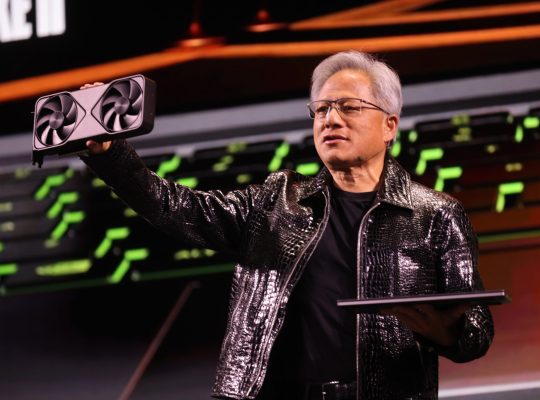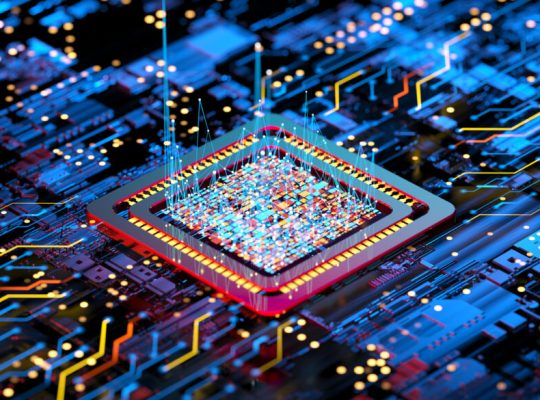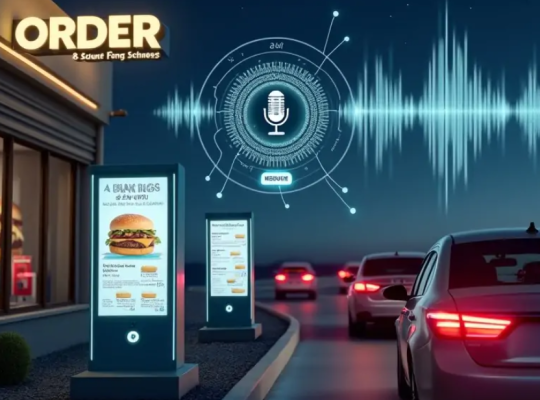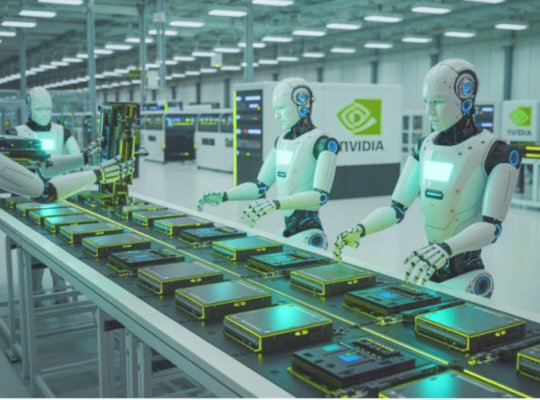AI-powered drive-thrus are rapidly transforming customer service in the fast-food industry, addressing key challenges like speed, accuracy, and personalization. While still evolving, these systems promise significant benefits for both businesses and consumers.
Here’s a breakdown of how AI is changing drive-thru customer service:
1. Automated Order Taking (Voice AI and Natural Language Processing – NLP):
How it works: AI-powered voice recognition systems use NLP to understand customer requests spoken naturally, rather than requiring specific commands. They can interpret complex orders, identify add-ons, and even flag potential errors in real-time.
Impact on customer service:
- Faster Service: AI can process orders much quicker than human cashiers, significantly reducing wait times in the drive-thru lane.
- Improved Accuracy: AI systems boast higher accuracy rates than humans, minimizing order errors which are a major source of customer frustration. This leads to customers getting exactly what they ordered.
- 24/7 Availability: AI assistants can operate around the clock, allowing drive-thrus to potentially offer service at all hours without increasing labor costs.
- Multilingual Support: Some systems can understand and speak multiple languages, catering to a broader customer base.
- Reduced Friction: Customers can speak freely without feeling rushed or needing to repeat themselves, leading to a smoother ordering experience.
2. Personalized Marketing and Dynamic Menus:
How it works: AI algorithms analyze customer preferences, past orders, time of day, weather, and even local trends to offer tailored menu suggestions and promotions. Some systems can even recognize repeat customers via license plate recognition or loyalty program integration.
Impact on customer service:
- Tailored Experiences: Customers receive recommendations for items they are more likely to enjoy, increasing satisfaction and potentially boosting order value.
- Relevant Offers: Dynamic menu boards can adjust in real-time to highlight popular items or special deals based on the current context.
- Enhanced Upselling: AI can intelligently suggest complementary items, leading to higher average order values without aggressive human upselling.
3. Real-Time Traffic and Demand Prediction:
How it works: AI analyzes historical data and current drive-thru traffic patterns to predict peak hours and demand fluctuations.
Impact on customer service:
- Optimized Staffing: Restaurants can adjust staffing levels and kitchen workflows in real-time, ensuring adequate resources during busy periods and minimizing idle labor during slower times.
- Reduced Bottlenecks: Predictive capabilities help proactively manage queues and optimize order fulfillment, keeping the drive-thru line moving efficiently.
4. End-to-End Automation and Operational Efficiency:
How it works: Beyond order taking, AI can integrate with kitchen equipment to automate workflows. When an order is placed, AI systems can communicate directly with fryers, grills, and assembly lines to optimize cooking schedules and ensure orders are ready as customers arrive. AI also helps with inventory management and predictive maintenance of equipment.
Impact on customer service:
- Faster Preparation: Streamlined kitchen operations mean food is prepared more quickly and is ready at the pickup window, further reducing wait times.
- Consistent Quality: Automated processes can ensure standardized cooking, leading to more consistent food quality.
- Reduced Waste: Accurate demand forecasting helps in better inventory management, minimizing food spoilage.
5. Data-Driven Insights:
How it works: AI systems collect vast amounts of data on customer behavior, preferences, order patterns, and operational metrics.
Impact on customer service:
- Continuous Improvement: Restaurants gain valuable insights to refine menu offerings, promotions, and overall operational strategies.
- Targeted Marketing: Data allows for more effective marketing campaigns that resonate with specific customer segments, leading to increased loyalty and sales.
Examples of AI in Drive-Thrus:
McDonald’s: Has famously piloted (and in some cases, paused) AI voice ordering systems, partnering with companies like IBM and Google to improve efficiency.
Wendy’s: Has been testing AI drive-thru technology with Google Cloud to improve order speed and accuracy.
Yum! Brands (KFC, Taco Bell): Are actively implementing an “AI-first mentality” in their operations.
Specific AI Providers: Companies like SoundHound, Hi Auto, and Checkmate offer AI-driven drive-thru solutions to various quick-service restaurants.
Challenges and Future Outlook:
While the benefits are significant, AI-powered drive-thrus still face challenges:
- Accuracy in Complex Orders/Accents: Despite advancements, AI can sometimes struggle with unusual phrasing, strong accents, or noisy environments, leading to order errors.
- Loss of Human Interaction: Some customers, particularly older demographics, may prefer interacting with a human.
- “Uncanny Valley” Effect: AI voices that are almost human but not quite can sometimes create an unsettling experience.
- Job Displacement Concerns: The potential for AI to replace human order-takers is a common concern.
- Upfront Investment: Implementing these systems requires a substantial initial investment.
Despite these challenges, the trajectory is clear: AI is set to become an increasingly integral part of the drive-thru experience. As the technology matures, accuracy improves, and integration becomes more seamless, AI will continue to revolutionize customer service by making drive-thrus faster, more accurate, more personalized, and more efficient.
















